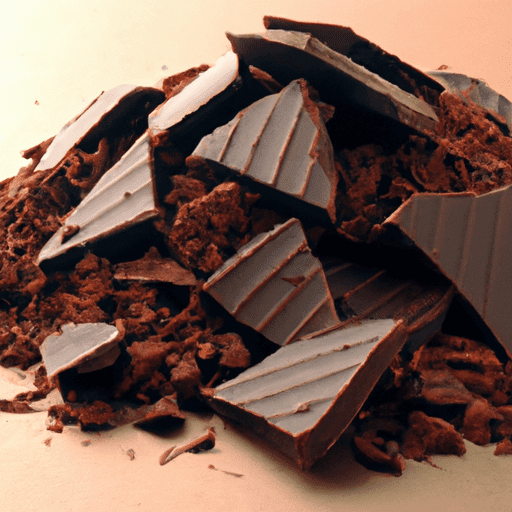Baking Chunks: A Versatile Kitchen Staple!
Are you looking to add a new and versatile ingredient to your baking arsenal? Look no further than baking chunks! These delightful morsels add a burst of flavor, texture, and sweetness to your favorite treats. Whether you’re making cookies, cakes, or even some homemade ice cream, baking chunks can take your creations to the next level. In this article, we’ll dive into the world of baking chunks, exploring their taste, common uses, nutritional value, and interesting facts. Join us on this delectable journey!
Taste and Texture Explosion
Baking chunks are small morsels made from ingredients like chocolate, caramel, nuts, or even dried fruit. These little bursts of flavor are often used as mix-ins in baking recipes, adding a delightful surprise in every bite. The taste of baking chunks can range from rich and creamy to sweet and tangy, depending on the type you choose. From classic chocolate chips to molten caramel chunks, there’s something to suit every taste preference!
When incorporated in baked goods like cookies or muffins, baking chunks bring a tantalizing texture to the table. They melt slightly, creating pockets of gooey goodness that perfectly complement the soft, chewy, or crunchy nature of your baked treats. The combination of flavors and textures adds a delightful complexity that keeps you coming back for more!
Versatile Uses
Baking chunks are incredibly versatile and can be used in a wide variety of recipes. Here are some popular ways to incorporate these delightful ingredients:
- Chocolate Chip Cookies: The classic use of baking chunks! Add chocolate chunks to your cookie dough for a more decadent and intense chocolate experience.
- Muffins and Cupcakes: Transform your favorite muffin or cupcake recipe by mixing in baking chunks of your choice. From fruity bursts to nutty surprises, the possibilities are endless!
- Brownies and Blondies: Enhance the richness and fudginess of brownies or blondies with the addition of baking chunks. Try white chocolate, caramel, or peanut butter chunks for a delightful twist.
- Homemade Ice Cream: Give your homemade ice cream a gourmet touch by adding baking chunks during the churning process. Whether you prefer chocolate, cookie dough, or fruit, the chunks will provide delightful surprises in every scoop.
Nutritional Value
While baking chunks are undeniably tasty, it’s important to be mindful of their nutritional value. The specific nutritional content can vary depending on the type of chunks used, but here are some general considerations:
- Calories: Baking chunks tend to be high in calories due to their sugar and fat content. Moderation is key to enjoying them without overindulging.
- Fat and Sugar: As mentioned, baking chunks often contain high levels of fat and sugar. While they add indulgence to your recipes, it’s essential to balance them with other nutritious ingredients.
- Vitamins and Minerals: Depending on the type of chunks, you may find some trace amounts of vitamins and minerals. For example, dark chocolate chunks are a source of antioxidants, while nut chunks provide healthy fats and protein.
Fun Facts and History
Did you know that the invention of chocolate chips, one of the most beloved baking chunks, happened by accident? Ruth Graves Wakefield, the owner of the Toll House Inn, ran out of baker’s chocolate while making chocolate cookies and decided to chop up a chocolate bar instead. Little did she know that this would lead to the creation of chocolate chips, which later became one of the most iconic baking chunks worldwide!
Another interesting fact is that baking chunks are not limited to sweet treats. Savory versions, like cheese or bacon chunks, can be used in bread, scones, or savory pastries to add a burst of flavor. The possibilities truly are endless!
Conclusion
Baking chunks are a delightful addition to any baker’s pantry. Their ability to add bursts of flavor and texture to baked goods makes them highly sought after. From classic chocolate chips to unique combinations like pretzel and peanut butter chunks, there is a wide range of options to explore. So, the next time you’re thinking of adding some pizzazz to your baked treats, give baking chunks a try. Your taste buds will thank you!
Baking Chunks
Origin: Baking chunks, also known as baking wafers or chocolate chunks, are small irregularly shaped pieces of chocolate that are commonly used in baking. The exact origin of baking chunks is unclear, but chocolate chunks have been used in recipes for chocolate chip cookies since the 1930s.
Common Uses: Baking chunks are most frequently used in baking to add chocolate flavor and texture to various recipes. They are commonly used in chocolate chip cookies, muffins, brownies, cakes, and other baked goods. However, they can also be used in a variety of other sweet treats like granola bars, trail mix, and ice cream.
Nutritional Benefits: Baking chunks, like other forms of chocolate, contain several nutritional benefits. They are a good source of antioxidants, which help protect the body against free radicals. Chocolate also contains minerals like iron, magnesium, and zinc. However, it is important to note that baking chunks typically also contain sugar and fat, so moderation is key when consuming them.
Unique Properties: Baking chunks are specially formulated to maintain their shape during the baking process. They are designed to retain their structure and only soften slightly, allowing them to create pockets of melty chocolate in baked goods. Baking chunks are generally made with a higher cocoa butter content than chocolate chips, giving them a smoother texture when melted.
Historical Significance: The use of chocolate chunks in baking gained popularity in the 1930s when Ruth Graves Wakefield, the owner of the Toll House Inn in Massachusetts, cut up a semi-sweet chocolate bar into small chunks and added them to her cookie dough. This led to the creation of the iconic chocolate chip cookie, which became extremely popular and has since become a classic American treat.




Use the share button below if you liked it.
It makes me smile, when I see it.